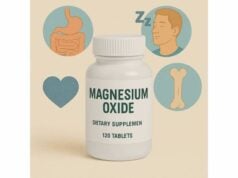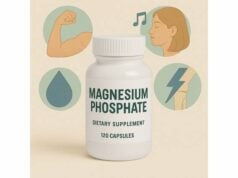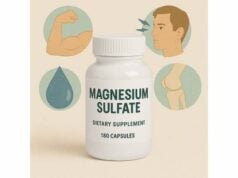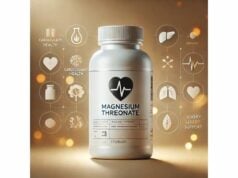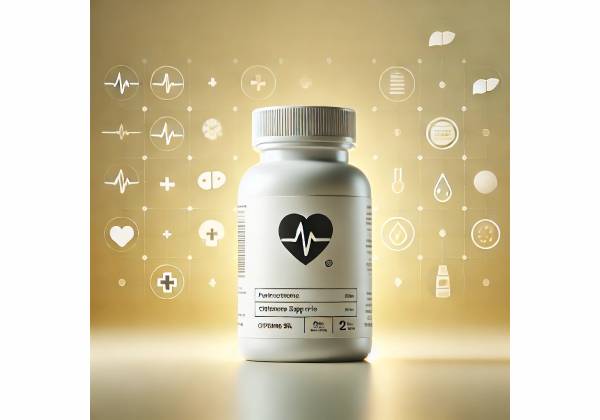
Mastic oil is the aromatic essential oil distilled from the resin of the mastic tree (Pistacia lentiscus var. chia), native to the Mediterranean and famously cultivated on the Greek island of Chios. Concentrated in monoterpenes such as α-pinene and β-myrcene, it is distinct from the raw resin “tears” and from powdered mastic gum. In modern research, encapsulated mastic oil has shown promise for cardiometabolic support—particularly for improving blood lipids—while mastic-based mouthwashes have been tested for halitosis in orthodontic patients. Beyond these areas, traditional uses include digestive comfort and mouth freshness.
This guide takes a practical, evidence-aware approach. You will learn what mastic oil is and how it differs from the resin, where the best clinical evidence sits today, how to use it step-by-step, and how to match the form and dose to your goal. You will also get clear safety guidance and pointers on product quality. The aim is to help you make informed, measured choices—whether you are exploring mastic oil softgels for eight to twelve weeks, considering a mastic-infused mouthwash, or comparing oil with the better-known resin.
Quick Overview
- Improves blood lipids in adults in short, modern trials; benefits typically appear within 8–12 weeks.
- May reduce halitosis when used in a mastic-containing mouthwash over 2 weeks.
- Typical softgel intake: 200 mg/day of mastic oil for 8–12 weeks, then reassess.
- Do not ingest undiluted essential oil from aromatherapy bottles; use food-grade softgels or validated oral products only.
- Avoid if pregnant or breastfeeding, allergic to pistachio/cashew family, or before planned surgery unless cleared by a clinician.
Table of Contents
- What mastic oil is and how it works
- Evidence-backed benefits of mastic oil
- How to use mastic oil correctly
- How much mastic oil per day
- Safety, side effects, and who should avoid
- What the evidence says today
What mastic oil is and how it works
Mastic oil is a steam-distilled essential oil derived from the resin of Pistacia lentiscus var. chia. While the raw resin contains triterpenes, phytosterols, and minor phenolics, the essential oil fraction is dominated by volatile monoterpenes, notably α-pinene, β-myrcene, β-pinene, limonene, and related compounds that carry its pine-balsamic aroma. This compositional split matters: when you choose mastic oil softgels, you are selecting a different chemical profile than when you chew resin tears or take resin powder capsules.
What sets mastic oil apart from the resin?
- Volatile actives vs. resin acids: The oil concentrates light, volatile molecules that disperse rapidly and may influence vascular tone, lipid handling, and inflammatory signaling; the resin leans heavier, toward triterpenic acids with local mucosal effects.
- Absorption and kinetics: Essential oils are absorbed quickly; peak tissue exposure and rapid clearance can favor short-term effects on oxidative stress signals and post-prandial lipids.
- Applications: Oil softgels have been studied for blood lipids and blood pressure in adults. Mouth rinses that include mastic components target local antimicrobial and malodor pathways. Resin, in contrast, is better studied for upper-GI symptom relief.
How might mastic oil work? Mechanisms in plain language
- Lipid metabolism support. In short trials, adults taking mastic oil softgels showed decreases in total cholesterol and LDL-C, and in some cases triglycerides, with modest HDL rises. The working hypothesis is that monoterpenes modulate lipid trafficking, oxidation, and receptor-level pathways involved in cholesterol handling.
- Vascular and blood pressure effects. Monoterpenes can influence endothelial function and nitric oxide pathways, potentially easing arterial stiffness and lowering systolic pressure in metabolically unhealthy adults.
- Oxidative stress and inflammation. Mastic oil components have shown anti-oxidative and anti-inflammatory activity in preclinical models and small clinical settings, including reductions in oxidized LDL and favorable changes in adipokines.
- Oral antimicrobial action. In the mouth, mastic-containing rinses and pastes can reduce volatile sulfur compounds (the gases driving halitosis) and may support plaque control when combined with brushing and flossing.
Important distinctions to keep in mind
- Food-grade vs. aromatherapy oils: The essential oil used in softgel trials is standardized for ingestion; do not substitute dropper-bottle aromatherapy oil, which is not formulated or dosed for oral use.
- Oil vs. gum claims: Some popular claims online blur oil and resin data. When your goal is lipid support or blood pressure, look for oil-based trials; for upper-GI comfort, evidence leans more on resin.
In short, mastic oil offers a volatile-rich pathway to cardiometabolic and oral-care goals. Its effects are modest—think “nudge” rather than “replacement”—and are most meaningful when paired with solid lifestyle habits or used as a targeted adjunct to standard care.
Evidence-backed benefits of mastic oil
Cardiometabolic support (lipids and blood pressure). Modern randomized, placebo-controlled studies in adults provide the clearest signals for mastic oil softgels:
- In healthy volunteers with elevated cholesterol over 8 weeks, softgels containing mastic oil produced meaningful reductions in total cholesterol and LDL-C versus placebo. Within the active group, average total cholesterol decreased by roughly 9% and LDL-C by about 12% from baseline, alongside modest triglyceride drops and small HDL gains. No hepatic or renal toxicity was reported, and gastrointestinal tolerability was good.
- In metabolically unhealthy adults (abdominal obesity and metabolic abnormalities) over 3 months, 200 mg/day of mastic oil improved elements of the lipid profile (notably triglycerides and LDL-C), and reduced systolic blood pressure while also shifting body composition metrics. Quality-of-life scores improved, and the regimen was well tolerated.
These outcomes frame mastic oil as a supportive adjunct. For someone with borderline or modestly elevated cholesterol who is already working on diet quality, fiber intake, and physical activity—or for a patient whose blood pressure is being optimized under supervision—mastic oil can contribute incremental improvements over a short, structured window. It is not a substitute for statins, antihypertensives, or other indicated therapies, and it has not been shown to prevent cardiovascular events.
Oral health and breath freshness. A two-week, randomized clinical trial in orthodontic patients found that a mastic-based mouthwash reduced hydrogen sulfide levels (a primary malodor gas) compared with placebo. While plaque and gingival indices did not differ significantly between groups in that specific study period, the objective malodor reduction is relevant for people with braces and those seeking targeted breath support. As with any mouthwash, benefits are greatest when combined with thorough brushing, interdental cleaning, and routine dental care.
Digestive comfort (what to expect). Traditional practice and resin-based research often drive expectations around digestion. With mastic oil specifically, high-quality human data are limited for upper-GI symptoms. Some individuals report a soothed, “balsamic” mouth-and-throat effect and easier post-meal comfort, but if your primary goal is dyspepsia relief, the resin—not the essential oil—has stronger evidence. If you prefer the oil form, trial it for 2–4 weeks and stop if you notice no clear benefit.
Who seems to benefit most from mastic oil?
- Adults with mildly to moderately elevated cholesterol who want to complement diet and exercise for a defined period (8–12 weeks).
- Individuals with metabolic syndrome features whose clinicians are refining a multi-component plan (nutrition, movement, sleep, stress, medications as needed).
- People with braces or halitosis concerns who wish to test a mastic-infused mouthwash for two weeks alongside standard oral hygiene.
Where claims outpace evidence. You may see bold statements about blood sugar “normalization,” weight loss, fatty liver reversal, or broad antimicrobial eradication. The actual clinical signals are modest and condition-dependent, and longer trials are needed. Treat sweeping promises with caution and prioritize measurable outcomes (lipid panels, home blood pressure logs, dentist-reported indices) over vague wellness claims.
Bottom line: For lipids and blood pressure, mastic-oil softgels show short-term, clinically relevant improvements in select adults. For halitosis, mastic rinses can help. For digestive symptoms, prefer resin evidence or use the oil experimentally with clear stop criteria.
How to use mastic oil correctly
Pick the right product for the right job
- For cardiometabolic goals: Choose ingestible softgels made with food-grade mastic essential oil. The label should clearly state the per-softgel content (e.g., 200 mg mastic oil) and provide manufacturing details.
- For breath and oral freshness: Select a mastic-containing mouthwash or toothpaste from dental-grade brands. Expect best results when used after brushing and interdental cleaning.
- Avoid undiluted ingestion: Do not swallow drops of aromatherapy mastic oil from a bottle; essential oils are concentrated and can irritate mucosa, interact with medications, and cause GI upset when misused.
Set a concrete, time-limited plan
- Define your outcome. Examples: “Reduce LDL-C by 8–12% in 8–12 weeks,” or “Lower home systolic BP by 3–5 mmHg while maintaining my current medication and lifestyle plan,” or “Reduce breath sulfur gases within 14 days.”
- Choose your form. Softgels for systemic effects; mouthwash for breath; do not mix multiple oil products without a reason.
- Use a daily routine. For softgels, take once daily with a meal. For mouthwash, use as directed (typically 30–60 seconds, once or twice daily).
- Track objectively. Log baseline labs (lipid panel), home BP (seated, validated cuff), or breath scores if measured at the dentist. Recheck at the target time (8–12 weeks for lipids/BP; 2 weeks for halitosis).
- Reassess and pause. If your targets are not met and no secondary benefits are noticed, stop and revisit the plan with your clinician.
Combine with foundations for a real-world uplift
- Diet: Emphasize vegetables, legumes, whole grains, nuts, and olive oil; aim for 25–30 g/day fiber. Soluble fibers (oats, psyllium) complement LDL reduction.
- Movement: A realistic goal is 150 minutes/week of moderate activity plus 2 resistance sessions. Even short, frequent walks after meals matter for lipids and glucose.
- Sleep and stress: Poor sleep and chronic stress skew cardiometabolic markers; adding mastic oil on a shaky foundation yields smaller returns.
Common mistakes—and better options
- Mistake: Taking aromatherapy oil by mouth.
Better: Use standardized softgels made for ingestion. - Mistake: Expecting drug-level effects on LDL-C or blood pressure.
Better: Treat mastic oil as an adjunct; keep evidence-based therapies on board when indicated. - Mistake: Using oil to self-treat suspected infection.
Better: Seek medical evaluation; mastic oil is not a stand-alone antimicrobial therapy for systemic infection. - Mistake: No metrics.
Better: Decide in advance which numbers will define success and when you will stop if they do not change.
Special notes for specific goals
- Cholesterol focus: Align your softgel course (8–12 weeks) with timing for a follow-up lipid panel. If you are already on a statin or ezetimibe, discuss mastic oil with your clinician; do not discontinue prescriptions without guidance.
- Blood pressure focus: Use a validated home monitor and log readings at the same time daily. If you see consistent improvements, share the log at your next visit; if not, reassess.
- Halitosis focus: Ensure tongue cleaning and flossing are in place; a mastic mouthwash can reduce sulfur gases, but plaque control still depends on mechanical cleaning.
How much mastic oil per day
Evidence-informed adult intake
- Softgel intake for cardiometabolic support: A practical starting point is 200 mg/day of mastic essential oil in softgel form for 8–12 weeks, taken with food. This mirrors modern clinical protocols in adults with metabolic concerns and aligns with study durations that documented changes in lipid profiles and, in some cohorts, blood pressure and body composition measures.
- Mouthwash for halitosis: Use a mastic-containing mouthwash as labeled, typically once or twice daily for 2 weeks, then continue only if the effect is clear and worthwhile to you.
Timing and pairing
- With meals: Taking the softgel with a main meal may improve tolerability and absorption.
- Separation from other supplements: If you also use binders (e.g., charcoal) or high-dose fibers, separate by at least 2 hours to reduce adsorption of the oil’s actives.
- Medications: There are no robust data for clinically significant drug–oil interactions at typical softgel intakes. That said, essential oils can influence enzymes and transporters in theory; if you take medications with a narrow therapeutic range, involve your prescriber before starting.
Titration and duration
- Start-low approach: If you are sensitive to supplements, begin with 100–200 mg/day for 3–4 days, then continue at 200 mg/day.
- Course length: Reassess at 8–12 weeks with the metrics you chose (lipid panel, home BP log, or dentist feedback). If benefits plateau, consider a pause rather than indefinite use.
- Repeat cycles: Some users plan two cycles per year around lifestyle pushes (e.g., recommitting to a Mediterranean-style diet), rather than continuous intake.
What outcomes to expect and when
- Lipids: In responders, reductions in total cholesterol and LDL-C typically appear by week 8 and may continue through month 3 when intake is steady and diet is supportive.
- Blood pressure: Small improvements in systolic values may become evident within 8–12 weeks in metabolically unhealthy adults who adhere to the full plan (diet, activity, medication adherence).
- Breath metrics: Objective halitosis gases can drop within 2 weeks of consistent mouthwash use, especially in orthodontic patients.
Who needs personalized dosing?
- Older adults with polypharmacy: Review the plan with a clinician first.
- People with gallbladder disease, reflux, or sensitive stomach: Take with meals and consider a short trial; stop if symptoms worsen.
- Pregnancy and lactation: Avoid unless your obstetric clinician explicitly approves; safety data are insufficient.
- Children and adolescents: Reserve oral softgels for adult use unless a pediatric clinician directs otherwise; mouthwash choices should be age-appropriate and supervised.
Do not do the following
- Do not ingest undiluted essential oil from dropper bottles.
- Do not exceed labeled intakes in the hope of faster results—more is not necessarily better with essential oils.
- Do not use mastic oil to replace prescribed lipid-lowering or antihypertensive therapy.
Safety, side effects, and who should avoid
Overall tolerability
Encapsulated mastic oil has been well tolerated in short-term adult trials. The most frequent comments are a brief pine-resin aftertaste and occasional mild digestive symptoms during the first days of use. In studies tracking laboratory safety, no liver or kidney toxicity signals were observed across 8–12 weeks at typical softgel intakes.
Common, usually mild effects
- Digestive: Transient nausea, belching, or a “warm” stomach sensation if taken on an empty stomach. These often resolve when taken with a meal.
- Taste and smell: Pine-balsamic aftertaste for several minutes post-dose.
- Mouthwash use: Rare gum or mucosal irritation if rinses are overused or not diluted as directed.
Precautions and special populations
- Allergy cross-reactivity: Mastic comes from the Anacardiaceae family (pistachio, cashew, mango). Avoid mastic oil if you have a known allergy to these plants or to tree resins.
- Pregnancy and breastfeeding: Data are insufficient; avoid unless specifically recommended by your obstetric clinician.
- Children: Ingestible softgels are best reserved for adults; discuss any pediatric use with a qualified clinician.
- Pre-surgical periods: Many clinicians advise stopping herbal supplements 1–2 weeks before elective procedures as a general precaution.
- Medication considerations: There are no strong human data showing clinically significant interactions at standard intakes; however, if you take narrow-therapeutic-index medications (e.g., warfarin, certain anti-arrhythmics, anti-seizure drugs), involve your prescriber and monitor as advised.
When to seek medical advice
- Cardiovascular concerns: Chest pain, new shortness of breath, or sustained blood pressure elevations require medical evaluation—do not self-adjust prescriptions.
- Gastrointestinal alarms: Black, tarry stools; vomiting blood; or significant, unintended weight loss are red-flag symptoms unrelated to supplement choice—seek care.
- Allergic reactions: Stop immediately and seek urgent care for rash with swelling, wheeze, or throat tightness.
Responsible use checklist
- Choose food-grade, labeled mastic oil softgels or validated dental products.
- Set a clear time limit (8–12 weeks for systemic goals; 2 weeks for halitosis).
- Track objective outcomes and decide in advance what counts as success.
- Keep core therapies (diet, movement, medications) in place; think “adjunct,” not “replacement.”
What the evidence says today
Strongest human signals for mastic oil
- Lipid improvement: In adults with elevated cholesterol, 8-week mastic-oil softgel courses produced statistically significant reductions in total cholesterol and LDL-C versus placebo, with favorable within-group shifts in triglycerides and HDL. These are clinically useful magnitudes for an adjunctive, non-prescription strategy.
- Cardiometabolic bundle effects: In adults with abdominal obesity and metabolic abnormalities over 3 months, 200 mg/day of mastic oil improved triglycerides and LDL-C, lowered systolic blood pressure, and nudged body composition in a favorable direction, without new safety concerns.
- Halitosis reduction: In orthodontic patients, a 2-week mastic mouthwash protocol reduced hydrogen sulfide levels versus placebo.
Interpreting these findings in real life
- Adjunct, not replacement. Trials are short, populations are selected, and outcomes are surrogate markers (lipids, BP, malodor gases)—not cardiovascular events. Mastic oil should complement diet and medication plans, not replace them.
- Dose and preparation matter. Benefits were seen with ingestible softgels (clearly labeled amounts of mastic essential oil) and with mastic-containing mouthwash. Do not extrapolate these results to undiluted essential oil drops or unrelated blends.
- Heterogeneity exists. Reviews emphasize that responses vary by population health status, baseline diet, product standardization, and duration. Some studies show strong lipid changes; others are neutral. Planning a personal trial with predefined success metrics keeps expectations realistic.
What we still need from future research
- Longer studies (6–12 months) assessing durability of lipid and blood-pressure changes and tracking clinical outcomes.
- Head-to-head comparisons with other non-drug strategies (e.g., plant sterols, soluble fiber) and add-on designs atop standard medications to clarify incremental value.
- Product standardization guidelines—covering distillation methods, monoterpene profiles, and per-softgel content—to reduce variability across brands and studies.
- Mechanistic links connecting monoterpene exposure to changes in vascular function, lipid oxidation, adipokines, and blood pressure at human-relevant doses.
Bottom line for now
If your aims are modest LDL-C reduction, small blood-pressure improvements, or targeted halitosis control, a structured, time-limited course of mastic oil softgels (or mastic mouthwash for breath) can be worthwhile. Anchor the trial to objective measurements, maintain core therapies, and reassess on schedule.
References
- Effects of Chios Mastiha essential oil on cholesterol levels of healthy volunteers: A prospective, randomized, placebo-controlled study (MASTIHA-OIL) 2024 (RCT)
- Chios mastiha essential oil exhibits antihypertensive, hypolipidemic and anti-obesity effects in metabolically unhealthy adults – a randomized controlled trial 2023 (RCT)
- The effect of mastic mouthwash on halitosis and oral hygiene in orthodontic patients: a randomized clinical trial 2023 (RCT)
- Chios Mastic Gum: A Promising Phytotherapeutic for Cardiometabolic Health 2024 (Narrative Review)
Disclaimer
This article is for educational purposes and is not a substitute for personalized medical advice, diagnosis, or treatment. Always speak with a qualified healthcare professional before starting, stopping, or combining supplements—especially if you are pregnant or breastfeeding, have chronic conditions (such as cardiovascular disease, diabetes, or liver disease), or take prescription medications. If you choose to trial mastic oil, use food-grade softgels or validated oral-care products, measure results, and reassess with your clinician.
If this guide helped you, please consider sharing it with friends or on Facebook or X, and follow us on your preferred social platforms. Your support helps us keep producing careful, evidence-aware health articles—thank you.

